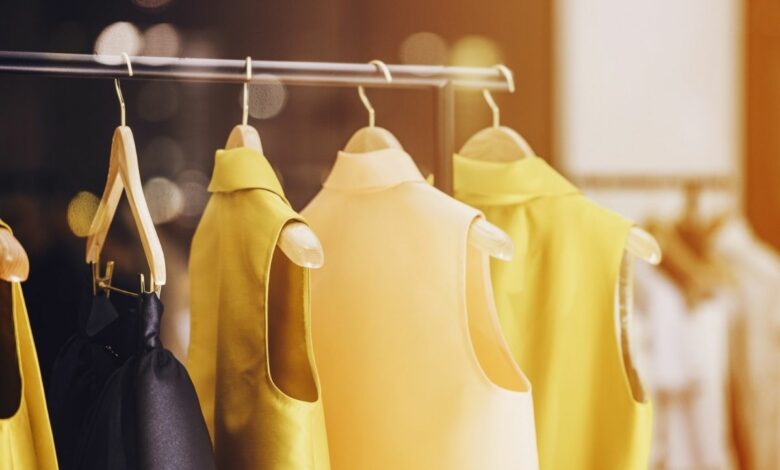Top 10 Best Garment Manufacturers in India in 2022.

Clothing or garments are anything worn on the body. Therefore, it is also called clothes, apparel, and attire. Most clothes are made of fabrics or textiles, but people have made clothes out of animal skin, thin sheets of materials, and natural materials found in the environment.
Garments are mostly something only people wear, and it is a part of every human society. How much and what kind of clothing people wear depends on their gender, body type, social situation, and where they live.
Garments cover the body, shoes cover the feet and hands, and hats and other headwear cover the head. Most people don’t think of eyewear and jewellery as clothing, but they are essential parts of fashion and clothing as a costume.
Garments can protect you from the weather, rough surfaces, sharp stones, plants that cause rashes, and insect bites by putting a barrier between your skin and the outside world. Garments can keep you warm or cool, and they can also act as a barrier to keep germs and other harmful substances away from your body. It can keep feet from getting hurt or uncomfortable or help people find their way in different places.
UV rays can also hurt you, but clothes protect you from that. It can be put on brimmed hats or other hard-to-see sites to reduce glare or improve vision. Garments are worn to keep from getting hurt when doing specific jobs, playing sports, or going to war.
When garments are made with pockets, belts, or loops, they can be used to carry things while leaving the hands free.
The garment is also a big part of social life. Putting on Garments is not always a colonial rule. It could be a sign of modesty. It might be embarrassing to be without clothes in front of other people. In many parts of the world, it could be considered indecent exposure to not wear Garments in public so that your genitalia, breasts, or buttocks are visible.
The most common minimum is covering the pubic area or genitalia. This is true across cultures and climates, which shows that social convention is the basis of customs. Clothing can also indicate social status, wealth, belonging to a group, or being an individual.
Some types of PPE are Garments, like coveralls, chaps, or a doctor’s white coat, and they need to be maintained and cleaned in the same way as other textiles (boxing gloves function both as protective equipment and as a sparring weapon, so the equipment aspect rises above the glove aspect). Protective accessories include things like face shields that are more specialized than other types of safety gear.
At the other end of the spectrum, self-enclosing diving suits or space suits fit the body like a second skin and are a form of dress that isn’t clothing. They have enough high-tech features to be more of a tool than a garment.
This line will continue to get blurrier as wearable technology makes it possible to put assistive devices right into the fabric. Technologies like low power consumption and flexible electronic substrates will make this possible.
Garments can also be a personal transportation system (ice skates, roller skates, cargo pants, other outdoor survival gear, one-man-band) or a concealment system (stage magicians, hidden linings or pockets in tradecraft, integrated holsters for concealed carry, merchandise-laden trench coats on the black market, where the purpose of the clothing often doubles as a disguise). Finally, an outfit or ensemble is a way to dress that fits a definition, whether for style or function.
First use of Garment
Scientists had never agreed on when people first started wearing Garments, and estimates have ranged from 3 million years ago to 40,000 years ago. Recent research on the evolution of body lice points to a more recent change. Some studies suggest that people started wearing clothes around 170,000 years ago, while others say it was as little as 40,000 years ago.
Scientists said in September 2021 that deposits found in Morocco showed that clothes were made 120,000 years ago. Despite these signs, there isn’t a single estimate that most people agree on.
Anthropologists at the Max Planck Institute for Evolutionary Anthropology, Ralf Kittler, Manfred Kayser, and Mark Stoneking, looked at the DNA of body lice to figure out when people first started wearing clothes. They think it was around 170,000 years ago. Body lice signify that a person wears Garments since most people have little body hair and lice need Garments to stay on their hosts.
Their research shows that people may have started wearing clothes when they left Africa because it was too hot there. This is thought to have happened between 100,000 and 50,000 years ago. Using the same genetic methods, the second group of researchers believes that clothing first appeared between 114,000 and 30,000 years ago.
Anthropologists and archaeologists say that the first clothes were probably made of fur, leather, leaves, or grass wrapped around the body or tied on. Since clothing materials break down quickly compared to stone, bone, shell, and metal artefacts, we don’t know much about these clothes.
However, archaeologists have found sewing needles made of bone and ivory dating to about 30,000 BC. They were found in 1988 near Kostenki, Russia. In a cave in the Republic of Georgia from 34,000 BC, dyed flax fibres that could have been used to make clothes were found.
Like those who live in the Arctic Circle, some people have always made all of their clothes out of prepared and decorated furs and skins. Other cultures added to or got rid of leather and skins by making cloth from wool, linen, cotton, silk, hemp, and ramie. This cloth was woven, knitted, or twined.
Today, people may not think much about how clothes are made, but making fabric by hand is a long, complicated process involving making fibre, spinning it, and weaving it. During the Industrial Revolution, the powered loom was the first machine to be used in a business.
Garments are made in many different ways by different cultures. One way to do it is to just drape the cloth. However, people still wear clothes made of rectangles of fabric wrapped to fit, like the dhoti for men and the sari for women in India, the Scottish kilt, and the Javanese sarong. The dhoti and sari can just be tied up, or you can use pins or belts to keep the clothes in place (kilt and sarong). The fabric isn’t cut, so people of different sizes can wear it.
The fabric can also be measured, cut, and sewn by hand or sewing machine. A tailor can use a sewing pattern to make clothes that fit the person who will wear them. A dress form or sewing mannequin can be changed and used to make clothes that fit well. If the fabric is expensive, the tailor tries to use every bit of the rectangle to make the clothes.
For example, they might cut triangles from one corner of the rectangle and use them as gussets elsewhere. This is how traditional European shirts and chemise patterns are made. You can also make patchwork pockets, hats, vests, and skirts out of these scraps.
The modern European fashion is much less strict about how it uses fabric. Often, it cuts it in a way that leaves odd-shaped scraps. Sewing factories sell these as waste, but home sewers can use them to make quilts.
In the thousands of years that people have been making Garments, they have come up with many styles. Many of these styles have been reconstructed from surviving clothes, photos, paintings, mosaics, etc., and written descriptions. Likewise, costumiers who make clothes for plays, movies, TV, and historical reenactments can get ideas from costume history.
According to estimates, India spent about US$108 billion on textiles last year. By 2021, the market is expected to be worth US$141 billion. More than 45 million people work directly for companies, and another 60 million work indirectly for companies.
This makes textiles the second-largest employer in the country, after agriculture. Government estimates say that the textile industry in India makes up about 5% of the country’s GDP and 14% of its Industrial Production Index (IIP).
India’s garments industry could become four times bigger in the next ten years, worth $500 billion. The US has $315 billion in sales and 185 billion dollars in sales outside the country. Currently, domestic sales are worth about $68 billion, and exports are worth about $40 billion.
Let’s talk about the Top 10 Garment Manufacturers in India in 2022.

1. Alok Industries- Best Garment Manufacturer
This vertically integrated textile company offers solutions in five major industries: cotton yarn, apparel fabrics, home textiles, garments, and polyester yarn. Its main office is in New York City. Alok has many customers, including domestic and international shops, clothing exporters in India, and leading brands worldwide. They are also home to some of the most successful traders and textile makers globally and in India.

2. Arvind Mills- Best Garment Manufacturer
Arvind Mills, which was started by three brothers in 1931, is one of the most important companies in India that makes high-end superfine fabrics. New Delhi is home to Arvind Mills. With brands like Arrow, Flying Machine, and USPA, Arvind has been a significant player in the business for decades. Arvind has grown into many fields, such as retail, engineering, telecommunications, textiles, Garments, complex materials, chemicals, and dyes.
Arvind is the biggest manufacturer of fire-resistant fabric in the United States. It also runs 15 clothing brands worldwide, including Tommy Hilfiger and US Polo. In addition, Arvind is one of the best textile companies in India.
Forty-two thousand employees work in real estate, clothing, farming, and environmental and social projects. It makes more money than any other textile company in India’s top ten. Arvind Ltd also owns NNNOW.com.

3. Vardhman Textile
In the Indian city of Vardhman, there is a company called Vardhman Textile that makes textiles. This subsidiary of the Vardhman Group was started in 1965. It is now India’s biggest textile company, with more than $1 billion in sales every year. Vardhman makes and sells Indian yarn, processed/greige cloth, acrylic fibre, and other goods. The company has 22 factories in five different Indian states.
Since it was first started, Vardhman Group has grown into a huge company that does business in India and 75 other countries. It does things like making yarn, fabric, and acrylic fibre. As India’s second-largest textiles company by revenue, Vardhman has a good business plan and a significant market share.

4. The SEL Group
The SEL Group SEL is an Indian textile company that is one of the largest textile businesses in India and the world. The company’s facilities in Punjab, Haryana, Himachal Pradesh, and Madhya Pradesh serve many customers. They do things like spin and knit, and they also make things like terry towels and clothes that are already made. The European and American markets buy a lot of yarn and thread from SEL.
5. Himatsingka Group
Himatsingka Group is a global company that makes vertically integrated home textiles. All of the Group’s activities have something to do with home textiles. The Group’s ability to make upholstery fabrics, curtain fabrics and bed linens are one of the world’s largest.
Since its start in 1985, the Himatsingka Group has focused on developing new products, finding the best ways to make them, and ensuring the supply chain works well to offer the best customer service. The Group, which employs more than 5,000 people, wants to grow and get more vital in the home textiles industry.
6. Welspun India
According to the company, Welspun India Ltd has fully integrated its textile production with one of the best textile producers in the world. Thanks to a global distribution network that includes 32 countries, the company’s home textiles can now be bought by people worldwide. Two of their most well-known brands are Christy and Hygrocotton. In addition, it has two high-tech plants, both of which are in Gujarat. These plants are in charge of making bed and bath textiles.
In the Indian textile business, Welspun is a well-known brand. At the moment, 70% of the company in high-end textiles comes from exports. Because of this, it makes the third most money out of India’s top 10 textile firms.
7. Trident
Trident Group is now one of the best-integrated home textile companies globally. It exports its products to more than 100 countries. The company makes some of the best terry towels globally and is one of the top yarn spinners in India. So, it’s not surprising that Trident is India’s leading maker and exporter of cotton terry towels and other textiles, chemicals, and captive electricity.
A few of the things the company makes are weaving, bed and bath linens, paper, chemicals, and electricity from its power plants. Trident’s cutting-edge production facilities are in the cities of Barnala (Punjab) and Budni (Bihar) (Madhya Pradesh). As a result, the company is one of the top exporters and has a significant share of the market for home textiles.
8. Groupe JBF
In 1982, JBF Industries Ltd. started as a company that textured yarn. Since then, the company has grown and made Partially Oriented Yarn (POY), Polyester (BOPET) Film, and different film-grade, bottle-grade, and textile-grade polyester chips. The company’s website says that JBF is the third-largest maker of Partially Oriented Yarn in India.
9. Page Industries
Page Industries is based in Bangalore. JOCKEY International Inc. owns a part of Page Industries Limited (PIL) (JIC). It has the only license to use the JOCKEY® trademark in India, Sri Lanka, Bangladesh, Nepal, and the United Arab Emirates. In addition, Speedo International Ltd. has given Page Industries the exclusive right to make, sell, and distribute Speedo products in India.
The company’s flagship brand, JOCKEY, is a leader in the innerwear market. The innovative work of Page Industries and JOCKEY has led to several firsts in the business of underwear.
Because there are many people in shopping malls and on main streets, the brand has been able to open 384 exclusive brand stores in India as of September 2017. JOCKEY has been working with KPR Mills for a long time, and you can see that in their stores, which have complete lines of sports and activewear for men, women, and children.
10. KPR Mills
KPR Mill Limited is India’s largest and most crucial textile manufacturer. It makes knitted grey cloth, multicoloured fabric, and ready-to-wear clothes. Its main office is in Mumbai, which is in India. With a production capacity of 95 million units per year, the corporation’s garment factory is one of the most significant in Indian history. It has also built windmills to make green energy for the state of Tamil Nadu, which meets 75% of its own electricity needs.
There are high-speed automated circular knitting machines in the fabric department that can make 27,000 MT of different types of fabric each year. Its Fabric Processing unit can handle up to 18,000 metric tons of material per year using advanced electrothermal processing (ETP). It is one of the giant textile factories in India. Every year, it makes 95 million clothes. It is a very well-known textile company in India.




